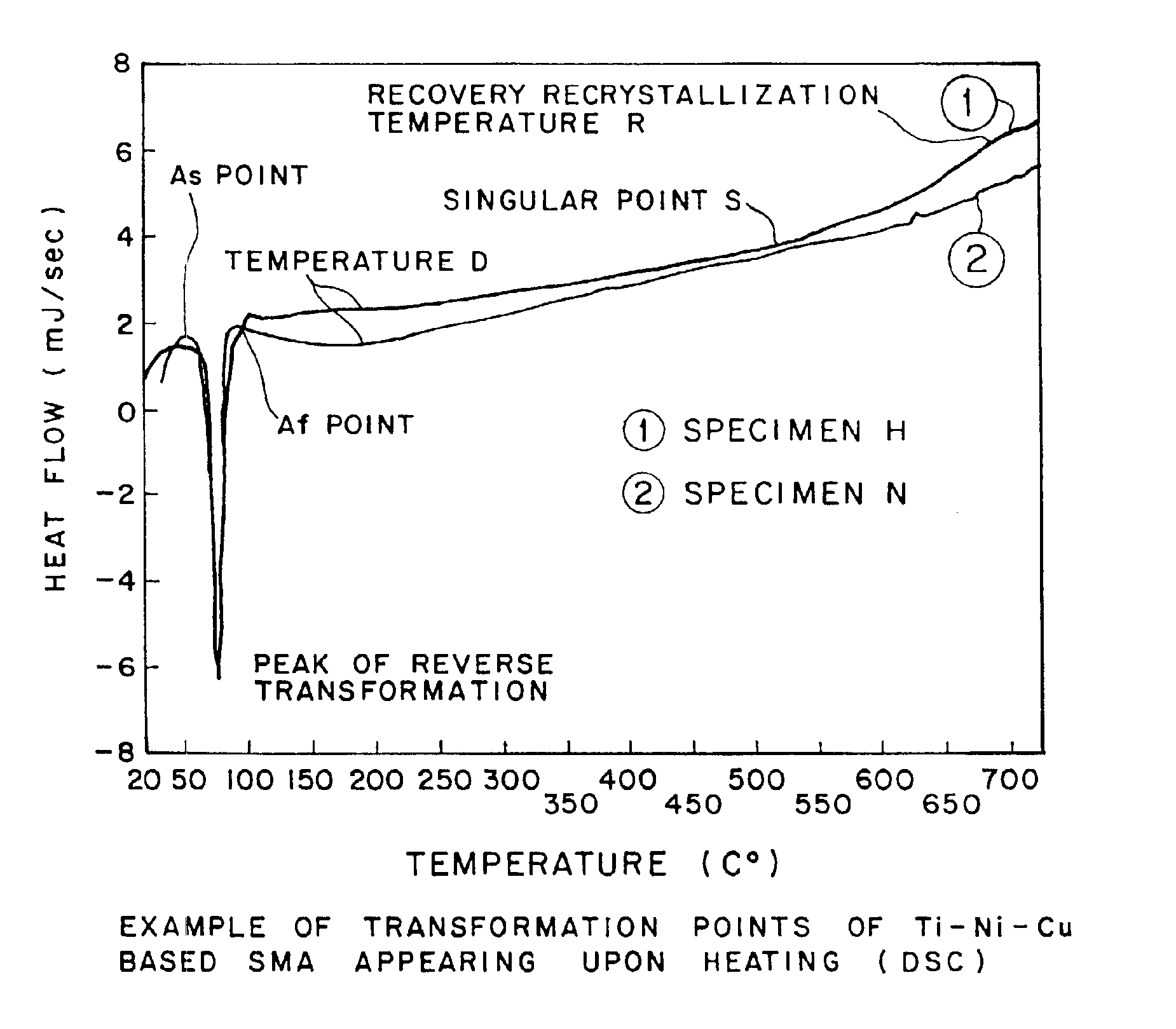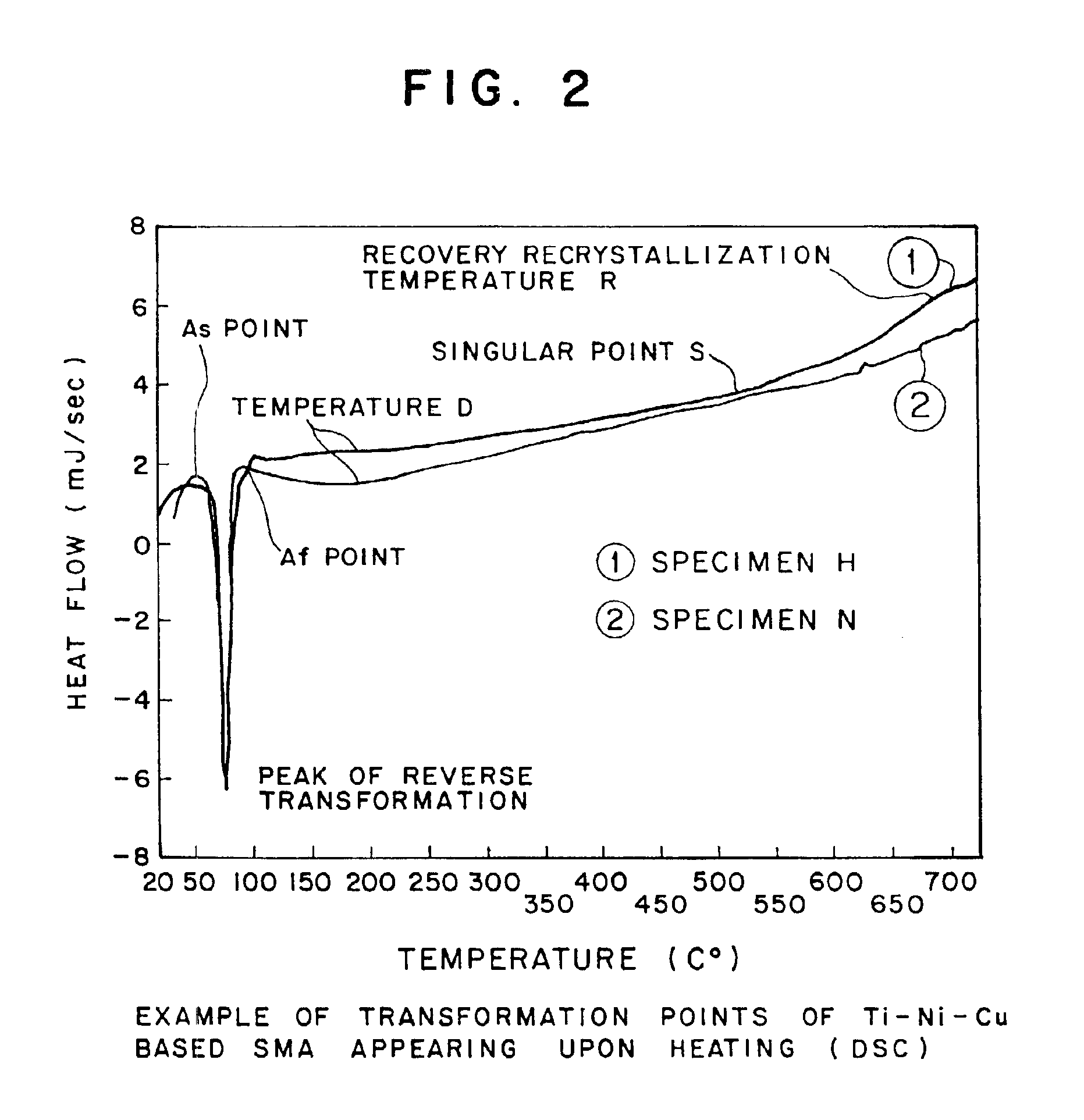Shape memory alloy and method of treating the same
a memory alloy and shape technology, applied in the field of shape memory alloys, can solve the problems of difficult to raise sub>f /sub>, restricted use temperature range, etc., and achieve the effect of good response characteristi
- Summary
- Abstract
- Description
- Claims
- Application Information
AI Technical Summary
Benefits of technology
Problems solved by technology
Method used
Image
Examples
first embodiment
[0085]FIGS. 4 through 9 show the method of treating a shape memory alloy in accordance with the present invention. In this embodiment, it is expected that upon using the finished shape memory alloy, the alloy is contracted to a memorized length, namely original length upon heating, while it relaxes upon cooling, expanding to a original deformed length, that is, a length with an elongation deformation from the memorized length. Therefore, the expected operational direction is a tensile direction in this embodiment. In this embodiment, a Ti—Ni based shape memory alloy material and a Ti—Ni—Cu based shape memory alloy material containing 8 to 12 atomic percent Cu are used as raw shape memory alloys 1.
[0086]The treatment in this embodiment basically consists of three stages. The first stage (Steps 1 and 2) is a process of producing fine-grained anisotropic crystals. The second stage (Steps 3 to 5) is a process of rearranging the respective crystals to conform to the expected operational ...
second embodiment
[0104]FIGS. 11 through 16 show the method of treating a shape memory alloy in accordance with the present invention. In this embodiment it is expected that the finished shape memory alloy takes the shape of a coil or helical spring, and when used as an actuator, it contracts to the memorized (original) coil length upon heating, while it relaxes and elongates to the original deformed coil length at a low temperature upon cooling (namely it operates as an extension spring), or it elongates to the memorized coil length upon heating, while it relaxes and contracts to the original deformed coil length at a low temperature upon cooling (namely it operates as a compression spring). In this embodiment the expected operational direction is a twisting direction.
(Preparatory operation)
[0105]An operation similar to the preparatory operation in the first embodiment is carried out.
(Step 1)
[0106]An operation similar to the step 1 in the first embodiment is carried out to prepare a raw shape memory...
PUM
| Property | Measurement | Unit |
|---|---|---|
| grain diameter | aaaaa | aaaaa |
| temperature | aaaaa | aaaaa |
| temperature | aaaaa | aaaaa |
Abstract
Description
Claims
Application Information
 Login to View More
Login to View More - R&D
- Intellectual Property
- Life Sciences
- Materials
- Tech Scout
- Unparalleled Data Quality
- Higher Quality Content
- 60% Fewer Hallucinations
Browse by: Latest US Patents, China's latest patents, Technical Efficacy Thesaurus, Application Domain, Technology Topic, Popular Technical Reports.
© 2025 PatSnap. All rights reserved.Legal|Privacy policy|Modern Slavery Act Transparency Statement|Sitemap|About US| Contact US: help@patsnap.com



